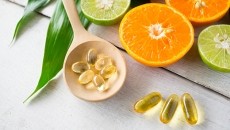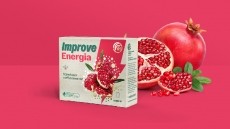High folate intake plus IVF may increase twin births
twins if their folate intake is above the recommended dose, says
new research.
"Our results suggest that the high incidence of twin births associated with treatment for infertility could be reduced, while maintaining livebirth rates, by encouraging women not to exceed recommended doses of folic acid and by identifying those at high risk of twins after double-embryo transfer on the basis of their plasma folate concentrations and age," said lead researcher Paul Haggarty from the University of Aberdeen, UK.
In-vitro fertilization (IVF) is a popular treatment for infertility and 20 per cent of treatment cycles result in pregnancy and livebirth. Most IVF practitioners increase the chance of pregnancy by implanting multiple embryos. Indeed, in the UK double embryo implantation is the norm.
The new prospective cohort study, published in the latest issue of The Lancet (vol.367, pp. 1513-1519), reports that women undergoing IVF and with excessive folate intake during pregnancy have increased births of twins. This is an issue to be considered, say the researchers, with the expected introduction of folic acid flour fortification in the UK.
In the UK expectant mothers are currently prescribed and recommended to take folate supplements to reduce the risk of neural tube defects. However, studies suggest that a lack of compliance is undermining these recommendations, and calls are growing for the introduction of fortification of flour with folic acid. In 1998 the US introduced fortification measures; a move that has seen the number of birth defects fall by 25 per cent. Similar strategies in Canada have seen the instance of birth defects cut in half.
The Aberdeen researchers enrolled 602 women undergoing IVF treatment. Dietary and supplemental intake of folate and vitamin B12 was calculated from self-administered food frequency questionnaires, with 528 women completing the questionnaire. Blood samples were also taken to measure plasma folate and vitamin B12 levels, and red blood cell folate levels.
The researchers found that the average folate intake from food was 311 micrograms, while the vitamin B12 intake was 6.5 micrograms. For women who took supplements, 73 per cent took the recommended daily amount (400 micrograms per day), while nine per cent took less that the RDA.
"High folate status (high intake and concentration of plasma and red cell folate) before pregnancy increases the chance of twins, but not the likelihood of a successful pregnancy after IVF," said Haggarty.
For a 100 microgram per day change in plasma-derived folate intake, the researchers calculated that the chance of twins increased by 22 per cent.
Increased vitamin B12 intake was also associated with an increased chance of twins, but the researchers said that this was possibly a secondary effect due to "significant covariance between plasma folate and vitamin B12."
The results, says Haggarty, have practical implications in light on the expected introduction of fortification of flour with folic acid.
"If the level of fortification achieved in the USA (increased intake of about 200 micrograms per day) were repeated in the UK, we calculate that the odds ration for IVF twin birth would be 1.48, or 1.62 based on the plasma folate-derived estimate of intake," said the researchers.
The lower of these estimates would translate into a increase of 600 twin births associated with IVF.
The USA is reported to have seen a 12 per cent increase in twin births for fertility treated mothers since the introduction of mandatory folic acid fortification in 1998.
"The need to increase the intake of folic acid to reduce the incidence of neural tube defects is not in doubt," said Haggarty. "But the associated risks of multiple births after IVF need to be addressed."
Since bread is a staple in most diets, flour has been seen as the ideal vehicle to improve iron intake for a population. Studies have shown that folic acid is more easily absorbed from fortified foods (85 per cent) and supplements (100 per cent) than the folate found naturally in foods (50 per cent).
The US fortification program has not been a total success story however, with a commentary published in the journal Pediatrics (Sept. 2005, Vol. 116, pp.753-755) claiming fortification levels need to be increased.











